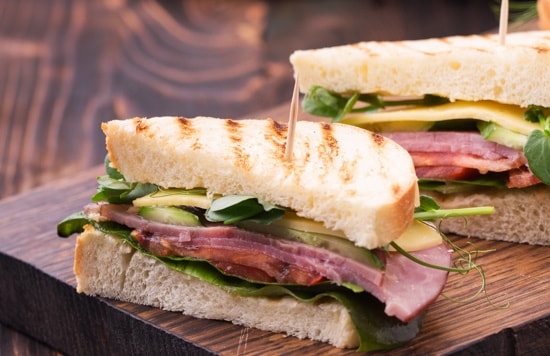Plan Your Life with Finance in Mind
Explore tips & ideas to make your life more financially rewarding.

Choosing the right type of dog food for your pet can be overwhelming. Consider the following criteria to narrow down the best type of pet food for your companion.

If you are considering buying a home, look at the benefits and risks of renting vs. buying so you can make the right decision for your next move: rent or buy.

How much do wedding flowers cost? What about rings and the cake? Here’s how to research wedding costs for your big day.

Order food online from the comfort of, well, anywhere. With so many food delivery services in Canada to choose from, this helpful checklist will make the path from restaurant to your home seamless.
Buying a house? Congratulations! Here are five things to consider when you’re purchasing a home in Canada
If you’re looking to save on gas, we’re going to show you some of the best ways to save money on gas.
Looking for the easiest way to start a garden? These tips will help you begin small and grow what you love, from flower gardens and kitchen gardens to kid-friendly pollinator gardens
If you’re looking for ways to satisfy your wanderlust, here are 9 ways you can cure your wanderlust travel bug, all while staying local.
A virtual party may be the best way to celebrate in certain situations, whether it's a virtual birthday party, virtual tea party, or virtual office party.
If your work from home setup needs some work, these five tips could help you find your groove and increase your productivity working from home.
Plan the perfect honeymoon with tips on how to pick the best destination, find time for adventures and relaxation, and look for deals that put you in the honeymoon suite.
Keep your biggest investment in top shape with this tips-packed annual home maintenance checklist, organized by season
Planning your retirement in Canada depends on your current age and savings, but you can build a retirement plan that matches your retirement goals at any age.
The countdown is on! Our wedding planning checklist will help you get organized with helpful wedding planning tips and easy-to-follow steps.
Learning to cook or bake? These 10 essential kitchen tools — plus some online classes or video tutorials — can help you get started.
Be sure to get everything done in time for your move! Our convenient checklist can help you remember the details related to a home or apartment move.
It doesn’t matter whether you’re doing a full house renovation, updating a key room or just looking for exterior home renovation ideas — these five tips will help you add value to your home.
Picking a streaming service can be hard, so here are tips on how to choose a streaming service and to discover what is the best TV streaming service for you.
If you're wondering about house renovation costs, this guide will take you through the cost to renovate an entire house, from the attic to the basement.
We break down how to create a food blog, so you can start blogging on your favourite food-related topics.
Whether you’ve got a small, modern bathroom remodel on your list or a luxurious, spa-style overhaul, knowing these five things will help keep bathroom remodel costs in line and ensure your project runs smoothly.
Knowing how to eat healthy is important, and these simple tips will help you start down the road to good nutrition.
Need creative date ideas for at-home date night? From date night dinner ideas to fun games to play, we've got you covered for a cozy night in.

Knowing how to eat healthy is important, and these simple tips will help you start down the road to good nutrition.

Order food online from the comfort of, well, anywhere. With so many food delivery services in Canada to choose from, this helpful checklist will make the path from restaurant to your home seamless

Need creative date ideas for at-home date night? From date night dinner ideas to fun games to play, we've got you covered for a cozy night in.

We break down how to create a food blog, so you can start blogging on your favourite food-related topics.

Picking a streaming service can be hard, so here are tips on how to choose a streaming service and to discover what is the best TV streaming service for you.

Learning to cook or bake? These 10 essential kitchen tools — plus some online classes or video tutorials — can help you get started.
Choosing the right type of dog food for your pet can be overwhelming. Consider the following criteria to narrow down the best type of pet food for your companion.

The countdown is on! Our wedding planning checklist will help you get organized with helpful wedding planning tips and easy-to-follow steps

Be sure to get everything done in time for your move! Our convenient checklist can help you remember the details related to a home or apartment move.

If you're wondering about house renovation costs, this guide will take you through the cost to renovate an entire house, from the attic to the basement.

Whether you’ve got a small, modern bathroom remodel on your list or a luxurious, spa-style overhaul, knowing these five things will help keep bathroom remodel costs in line and ensure your project runs smoothly.
Planning your retirement in Canada depends on your current age and savings, but you can build a retirement plan that matches your retirement goals at any age.
How much do wedding flowers cost? What about rings and the cake? Here’s how to research wedding costs for your big day.
If you are considering buying a home, look at the benefits and risks of renting vs. buying so you can make the right decision for your next move: rent or buy.
It doesn’t matter whether you’re doing a full house renovation, updating a key room or just looking for exterior home renovation ideas — these five tips will help you add value to your home.
Explore Our Cards
American Express offers a range of Cards with different rewards and benefits tailored to your lifestyle and interests.



